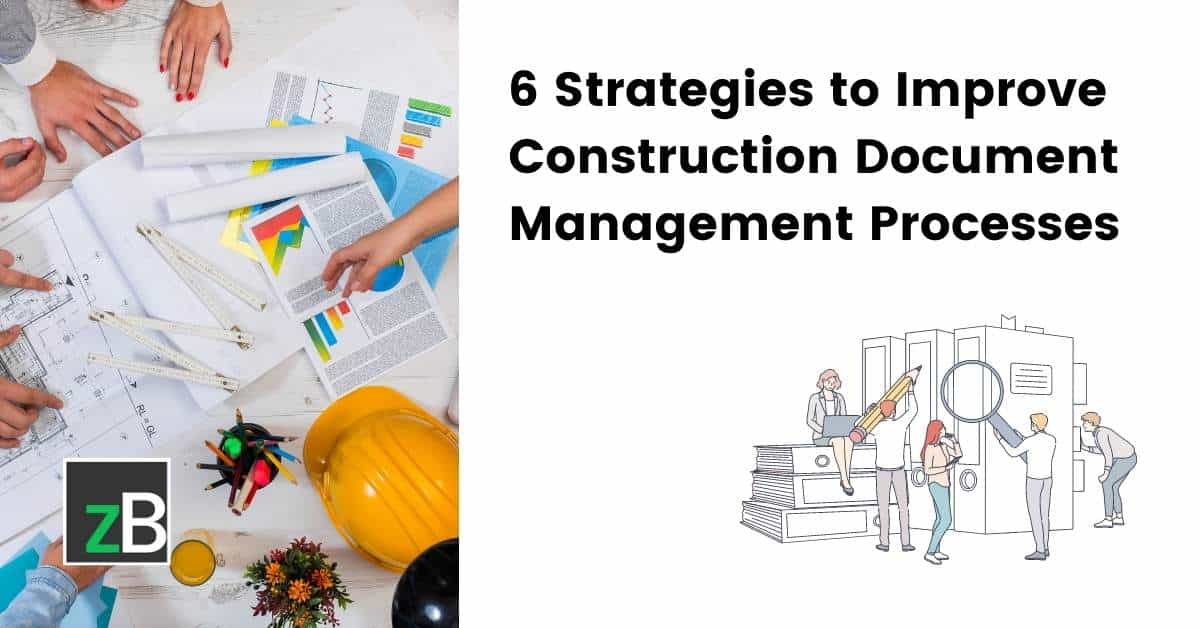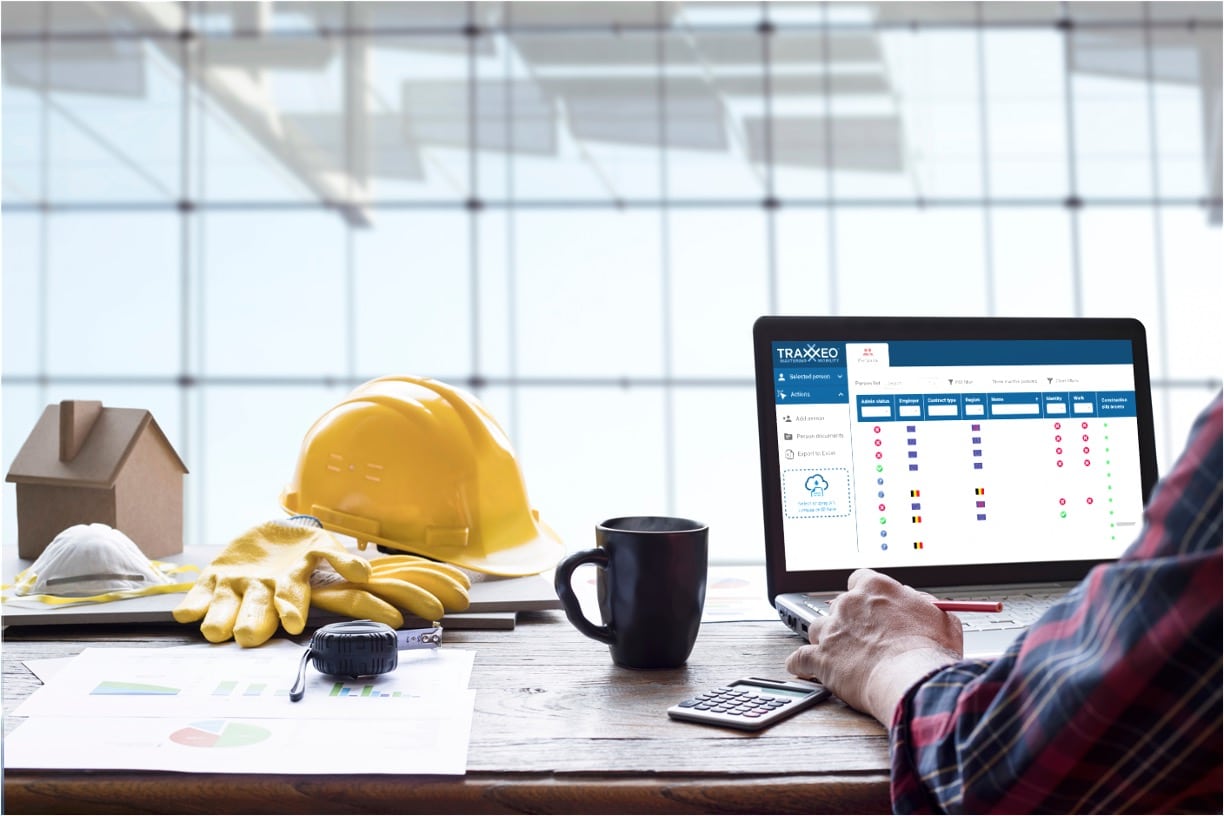Efficient Construction Document Management Solutions for every single Task
Efficient Construction Document Management Solutions for every single Task
Blog Article
Designer's Guide to Improving Construction File Management for Reliable Task Execution
In the complex world of architecture and construction, the effective management of job paperwork stands as a foundation for success. Designers are charged with handling a myriad of drawings, contracts, reports, and requirements, all essential components for bringing a task to fruition. However, the procedure of arranging, sharing, and maintaining these papers can commonly end up being a maze of inefficiencies and obstacles if not taken care of thoroughly. By checking out methodical methods, ingenious tools, and market best methods, architects can not just enhance their paper monitoring procedures however likewise lead the way for more effective project execution. Let's navigate with the vital methods and solutions that can revolutionize how architects take care of construction documents, making certain tasks are delivered with accuracy and timeliness.
Value of Effective Document Management
Why is efficient document administration critical for designers in the construction industry? Reliable record monitoring is crucial for designers in the building and construction sector as it plays a critical function in making sure the effective execution of tasks. Engineers take care of a huge variety of files, varying from layout illustrations and specs to permits and agreements. Correct company and administration of these documents are vital to preserve task timelines, make certain conformity with policies, and facilitate reliable interaction amongst job stakeholders.

Reliable paper monitoring makes it possible for engineers to accessibility critical information immediately, track project development properly, and reduce risks related to errors or noninclusions. By implementing streamlined document monitoring processes, architects can improve collaboration with clients, contractors, and various other group participants, bring about improved job outcomes and client contentment.
In addition, efficient paper management helps designers maintain a comprehensive task history, allowing them to take advantage of past lessons and experiences found out for future projects. In today's hectic construction sector, where prompt decision-making and information sharing are extremely important, effective file monitoring is a cornerstone for success.
Strategies for Simplifying File Company
Effective record monitoring techniques not only make sure project success for designers in the construction industry yet also lay the structure for implementing methods for streamlining document company. To streamline paper company efficiently, engineers need to first develop a clear naming convention for documents and folders. Consistency in naming data based upon project stages, record types, and relevant info will certainly assist in very easy retrieval and decrease complication.
Utilizing cloud-based storage services can likewise enhance file organization by offering a centralized location for all project-related files - construction document management. This permits staff member to access one of the most current records from anywhere, advertising partnership and efficiency. Applying variation control systems additionally fine-tunes file organization by tracking changes, avoiding conflicting edits, and ensuring that the current variations are constantly offered
Moreover, developing a sensible folder structure with marked subfolders for various document classifications, such as drawings, contracts, and requirements, can improve record monitoring processes. Frequently evaluating and removing out-of-date or repetitive data will assist maintain a lean and well organized record database, inevitably enhancing performance and project outcomes.
Leveraging Technology Equipment for Collaboration
In the realm of modern-day style, architects are progressively counting on advanced innovation tools to cultivate smooth cooperation amongst task stakeholders. Cloud-based systems such as BIM 360 and Procore enable real-time access to task papers, making it possible for service providers, clients, and architects to collaborate successfully no matter of their physical area.
Online layout and construction (VDC) software program like Revit and AutoCAD Design enable engineers to develop detailed 3D versions that can be shared and edited collaboratively. This real-time cooperation boosts layout accuracy, sychronisation, and visualization, causing much better decision-making throughout the task lifecycle. In addition, communication tools like Slack and Microsoft Teams give instantaneous messaging, file sharing, and video conferencing capabilities, promoting seamless communication amongst employee and stakeholders.
Guaranteeing Precision and Version Control

Reliable variation control also aids in managing paper approvals and making certain that only accredited straight from the source workers make alterations. Designers need to establish clear methods for documenting adjustments, including timestamps and customer identification, to produce an audit route for responsibility. On a regular basis connecting with the task team about version updates and modifications is vital to stay clear of confusion and preserve alignment throughout the construction procedure.
Best Practices for Record Sharing and Access
Having actually established a durable view system for version control in building and construction document administration, designers can now focus on optimizing document sharing and access techniques to improve collaboration and efficiency among task stakeholders. These systems offer real-time access to project records, making it possible for group members to see, modify, and comment on files concurrently.
In addition, implementing role-based accessibility control is crucial for maintaining information protection while assisting in partnership. Assigning various permission degrees to staff member makes certain that delicate info is only accessible to accredited workers. Routinely updating access permissions based upon job needs and team changes is critical for maintaining information stability.
Integrating job management software program with file sharing platforms can additionally improve operations. This combination permits seamless interaction, job monitoring, and document management within a solitary interface, lowering the demand to switch in between multiple tools. By adhering to these best techniques, designers can develop a more reliable and collaborative paper sharing setting, ultimately bring about successful task implementation.

Final Thought
To conclude, efficient construction record management is vital for successful project implementation. By carrying out methods for organization, leveraging technology tools for collaboration, ensuring precision and variation control, in addition to adhering to best techniques for paper sharing and gain access to, engineers can simplify their process and improve overall job efficiency. Prioritizing these facets of file monitoring will lead to smoother job execution and better results for all stakeholders involved.
Reliable document administration is vital for architects in the building and construction market as it plays a crucial Visit Website function in making sure the successful execution of jobs. construction document management. Appropriate company and monitoring of these papers are vital to keep task timelines, ensure conformity with laws, and help with efficient interaction amongst project stakeholders
Effective record management methods not just make certain project success for engineers in the construction market however additionally lay the structure for executing strategies for simplifying file organization. One vital strategy is establishing a centralized document database where all group participants can access the latest versions of drawings, requirements, and other project files.Having established a robust system for version control in construction file administration, designers can now focus on enhancing paper sharing and accessibility methods to enhance collaboration and efficiency among project stakeholders.
Report this page